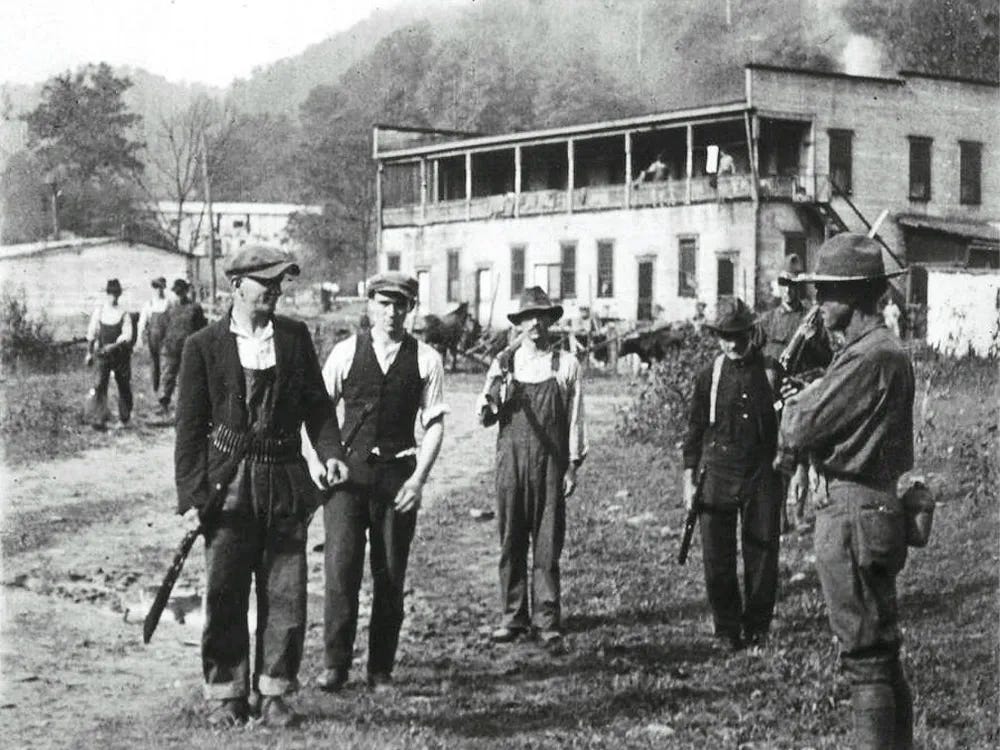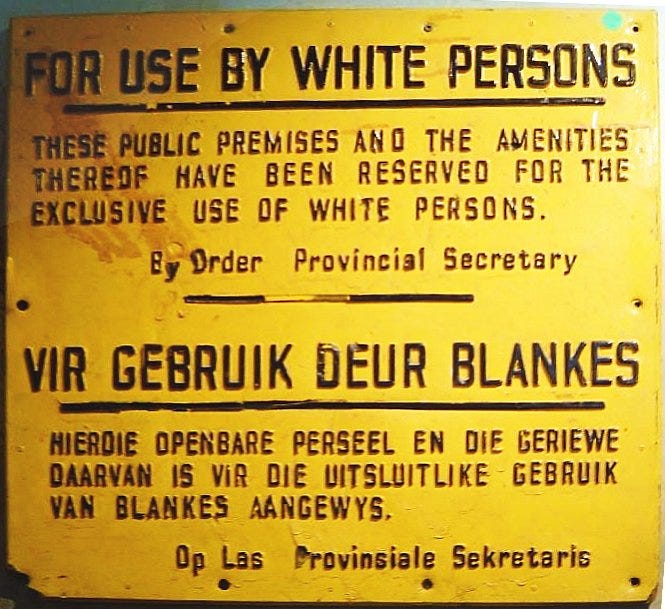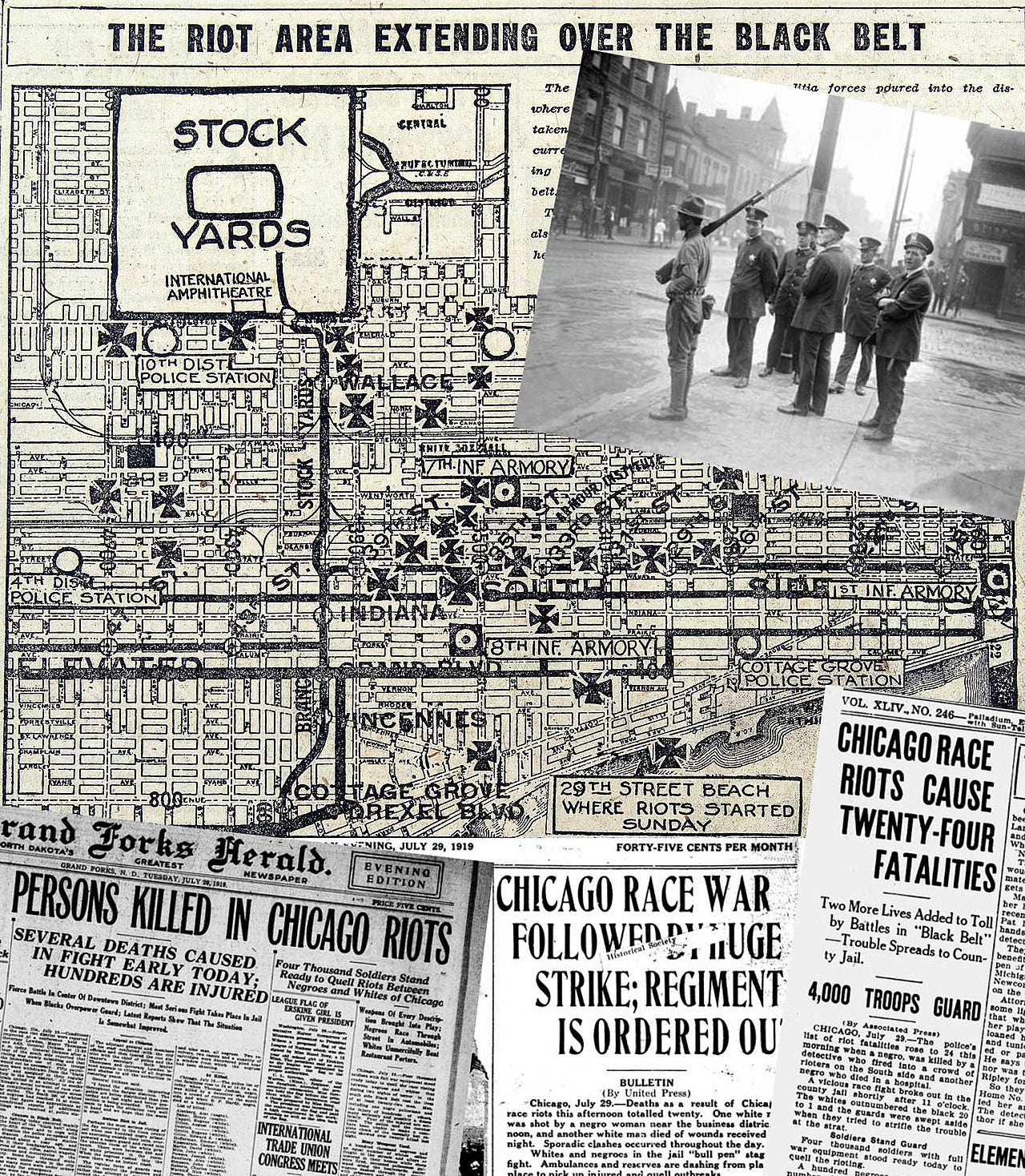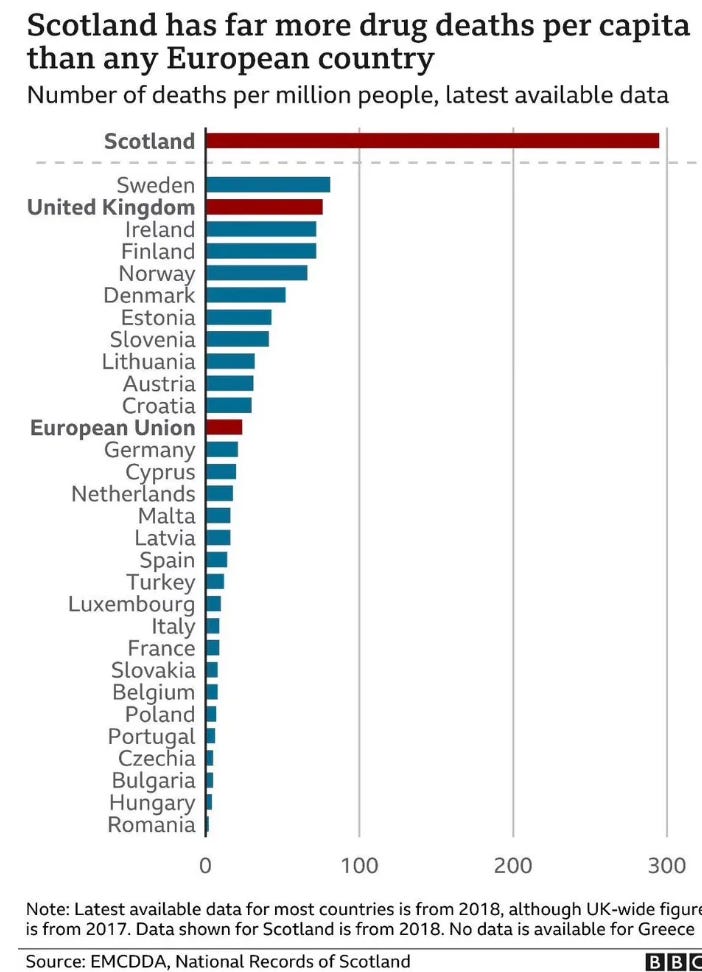We Have Entered the Upside Down: The DNC Goes Populist
Kamala Harris and Tim Walz take over the democrat party by seizing on the Appalachian working-class vote. No more calling half the country "Deplorables."
https://x.com/MorePerfectUS/status/1826785693093273680
During the Civil War, Appalachia has home to the majority of Southern Unionists from East Tennessee, North Carolina, and Virginia (which included West Virginia at that time). African American freedmen and southern unionists were both a target of the KKK after the Civil War.
What Made the Battle of Blair Mountain the Largest Labor Uprising in American History | Smithsonian (smithsonianmag.com)
The Battle of Blair Mountain saw 10,000 West Virginia coal miners march in protest of perilous work conditions, squalid housing and low wages, among other grievances. They set out from the small hamlet of Marmet, with the goal of advancing upon Mingo County, a few days’ travels away to meet the coal companies on their own turf and demand redress.
They would not reach their goal; the marchers instead faced opposition from deputized townspeople and businesspeople who opposed their union organizing, and more importantly, from local and federal law enforcement that brutally shut down the burgeoning movement. The opposing sides clashed near Blair Mountain, a 2,000-foot peak in southwestern Logan County, giving the battle its name.
Miners then often lived in company towns, paying rent for company-owned shacks and buying groceries from the company-owned store with “scrip.” Scrip wasn’t accepted as U.S. currency, yet that’s how the miners were paid.
For years, miners had organized through unions including the Industrial Workers of the World (IWW) and United Mine Workers of America (UMWA), leading protests and strikes.
Nine years prior to Blair Mountain, miners striking for greater union recognition clashed with armed Baldwin-Felts agents, hired mercenaries employed by coal companies to put down rebellions and unionizing efforts. The agents drove families from their homes at gunpoint and dumped their belongings. An armored train raced through a tent colony of the evicted miners and sprayed their tents with machine gun fire, killing at least one. In 1914, those same agents burned women and children alive in a mining camp cellar at Ludlow, Colorado.
This history of violence against the miners and their families, combined with low wages, dangerous jobs and what amounted to indentured servitude with a lifetime of debt were all contributors to the Blair Mountain uprising. Hatfield’s murder lay atop these injustices. On August 25, 1921, it all boiled over and miners marched toward Mingo, where they hoped to force local deputies to lift the strict martial law that inhibited union organizing…
In Thunder in the Mountains, a thoroughly reported historical account of the battle, author and historian Lon Savage describes a testy, oppressed and angry group of laborers.
“They had been crushed and killed on their jobs and fired from them when they tried to organize a union,” Savage wrote. “They had been evicted from their company homes and machine-gunned in their union tents. Periodically they had risen in fury...”
On September 2, 1921, President Warren G., Harding heeded West Virginia lawmakers’ requests for federal troops. Their presence persuaded the miners to throw down their guns and surrender, as many were veterans themselves and refused to fight against their own government. They sought to wage war not against the United States but against coal operators…
After Blair Mountain, small victories and bigger losses would change the landscape of union organizing… But membership in the United Mine Workers of America plummeted; continued strikes cost the UMWA millions and made little headway toward their goals of changing coal company policies. UMWA membership peaked around 1920, with 50,000 members, but fell to just 600 in 1929. Later, it would rise and fall again, following a roller coaster of peaks and declines throughout the 20th century…
In 1921, coal company towns were segregated, and Brown v. Board of Education was decades away. However, Wilma Steele, a board member of the West Virginia Mine Wars Museum, says Matewan was one of the only towns in the United States where Black and white children, most commonly Polish, Hungarian and Italian immigrants, went to school together. Other miners were white Appalachian hill folk. Most all were kept apart in order to prevent organization and unionization. It didn’t work. Keeney recalls one incident during the Mine Wars, Black and white miners held cafeteria workers at gunpoint until they were all served food in the same room and refused to be separated for meals.
“We don’t want to exaggerate it and act like they were holding hands around the campfire, but at the same time they all understood that if they did not work together, they couldn’t be effective,” Keeney says. “The only way to shut down the mines was to make sure everybody participated.”
Rhino Energy WV Will Pay $62,500 to Settle EEOC National Origin Discrimination and Retaliation Suit | U.S. Equal Employment Opportunity Commission
Black Codes and Segregation was about preventing “white” indentured servants and “black” slaves from gathering and planning to overthrow the Anglo aristocracy planter class and later used to prevent unionization.
The Black Codes, sometimes called the Black Laws, were laws which governed the conduct of African Americans (both free and freedmen).
In 1865 and 1866, after the Civil War, in order to restrict African Americans' freedom, and in order to compel them to work for either low or no wages.
Bacon's Rebellion was the first rebellion in the North American colonies in which discontented frontiersmen took part (a somewhat similar uprising in Maryland involving John Coode and Josias Fendall took place shortly afterward). The alliance between European indentured servants and Africans (a mix of indentured, enslaved, and Free Negroes) disturbed the colonial upper class. They responded by hardening the racial caste of slavery in an attempt to divide the two races from subsequent united uprisings with the passage of the Virginia Slave Codes of 1705.[5][2][6]
The 1919 Race Riots Lead to Redlining
During the 1919 Race Riots in Chicago, Irish gangs dressed in blackface to set fire to Polish neighborhoods, because Poles saw the racial unrest as a “black” and white” issue and since they weren’t white the riot didn’t involve them (Roediger, 2004).
The Reagans Colts and the Hamburg Athletic Association were the gangs involved in instigating the race riot and Richard J. Daley, the future mayor of Chicago, was the president of the Hamburg gang at that time. In Chicago and other northern cities, historian Joseph Parot observed real estate agents pressing white couples to move to the suburbs while encouraging black ones to move into Polish ethnic communities. Parot found that housing patterns commonly showed ethnics such as Poles and Italians were used as "buffer zones" between “black” and “white” areas in multiple cities (Pula, 1995).
J. D. Vance Will Replace You Now: Opioids, Foreign Intel and The Extinction of the Hillbillies (Chuckstack.com) By Charles Johnson Jul 18, 2024
No, to rage against an elite is not to replace one, alas.
But Vance doesn’t want to replace the elite; he wants desperately to join it. It’s his own people he wants to replace.
I’ve been rereading and thinking a lot about J.D. Vance’s book: Hillbilly Elegy. An elegy is a lament for the dead. Are the hillbillies dead? And if so who killed them? Who helped to kill them?
All throughout Vance’s book there’s the notion that the hillbillies deserve their fate for their choices — a classic talking point of the Sackler family who gave us Purdue Pharma, a firm that has killed hundreds of thousands of people in the opioid crisis and which was memorably chronicled in Empire of Pain: The Secret History of the Sackler Dynasty and the reporting of Patrick Radden Keefe…
Vance worked for a time for the American Enterprise Institute, a neoconservative think tank funded, in part, by the Sackler family.
Arthur, Mortimer, and Raymond Sackler were the three children of Jewish immigrants from Galicia and Poland, grew up in Brooklyn in the 1930s. Educated in the United Kingdom with their drugs manufactured in China and their donations flowing to Israel, the Sacklers effectively hijacked the conversation in this country around the mass killing of the redneck category.
Now there’s a lot of genetic evidence that our Scottish Irish — who overwhelmingly fight our wars — are genetically predisposed to opioid addiction.
PTSD among Appalachian veterans: A descriptive study. (apa.org)
“Appalachian servicemembers have historically been overrepresented in combat roles of the military, perhaps associated with Appalachian cultural emphasis on patriotism, experience hunting on rugged terrain, and disadvantaged socioeconomic status. Combat exposure has been linked with higher incidence of PTSD and comorbid PTSD/SUD; however, little is known about Appalachian veterans with PTSD, despite their overrepresentation in combat arms. The current study set out to descriptively examine PTSD among veterans from the central core mountainous region of Appalachia, with particular emphasis on diagnoses of PTSD (without SUD) and PTSD comorbid with SUD. Within comorbid diagnoses, we further examined alcohol use disorder, opioid use disorder, and polysubstance use.”
Opioid Addiction, Genetic Susceptibility, and Medical Treatments: A Review - PMC (nih.gov)
“Classic genetic approaches such as twin, family and adoption studies show that there are significant genetic influences on drug addiction… the heritability of addiction has been estimated at 0.4–0.6 [66,67].”
Sackler-owned Mundipharma seeks bids for China unit in over $1 billion deal -sources | Reuters By Kane Wu May 5, 2021
Tel Aviv University to remove Sackler name from medical school, weeks after family set terms of opioid settlement - Jewish Telegraphic Agency (jta.org)
Rudy Giuliani Helped Purdue Pharma Keep Selling OxyContin - Business Insider















